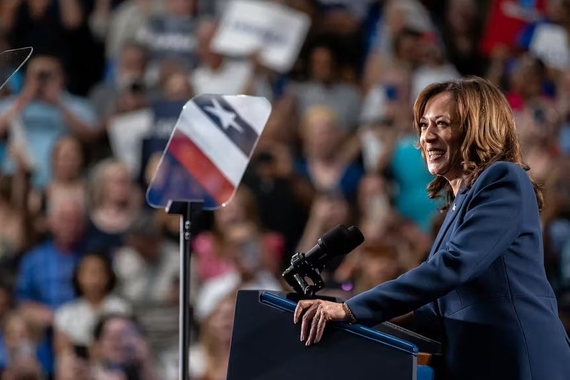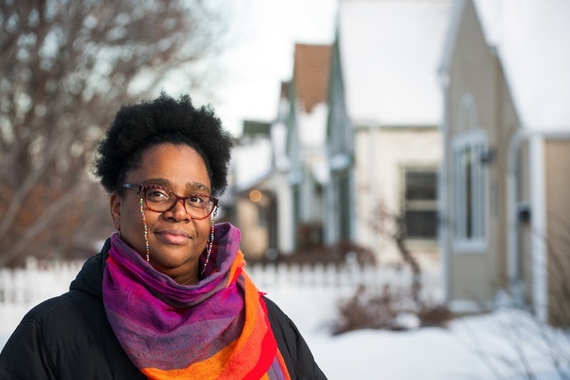Affirmative Action Reversal: Understanding the History and Implications
Yesterday, the Supreme Court ruled that race can no longer be used as a factor in college admissions decisions. But how did we get here? What is the history of affirmative action? And what will be the implications of this major reversal for institutions of higher education? Professor and affirmative action scholar Jennifer Pierce (American Studies) weighs in.
What were the issues in the case before the Supreme Court?
As a sociologist who studies how narratives operate in the news media, I understand the SCOTUS decision as two competing stories about race and racism in the United States. In one narrative, the United States is a society where institutionalized racism continues to negatively affect the life chances of Black, Indigenous, People of Color (BIPOC). This is the argument made in the Court’s dissenting opinion and it is supported by years and years of research by historians, sociologists, economists, and other scholars. The other story, told in the majority opinion, is that affirmative action hurts white men and, consequently, is unfair. This story is not supported by evidence. It’s a false narrative.
Can you tell us about the history of affirmative action?
In 1965 President Lyndon B. Johnson’s issued Executive Order 11246 that called for workplaces with federal contracts of more than $50,000 and 50 or more employees to take affirmative action to remedy past and current racial inequities in workplaces. He amended that Executive Order in 1967 to include women as a protected class. (Disability was added in the early 1990s.) So, what is often forgotten in contemporary stories about affirmative action is that the policy was created to protect BIPOC and white women from discrimination in their workplaces. Initially, employers were uncertain about what constituted discrimination. White women and BIPOC workers, on the other hand, used affirmative action as leverage to make a variety of claims about sex discrimination and racial discrimination. For instance, secretaries claimed that their abysmally low pay was tied to the historical devaluation of jobs that were predominantly female and claimed they faced sex discrimination. Women with PhD’s, on the other hand, claimed that sex discrimination barred their access to male dominated jobs in academia.
President Richard Nixon’s administration narrowed this definition of affirmative action to questions about access by introducing the concept of “utilization analysis.” What this meant was that organizations with federal contracts of more than $50,000 and more than fifty employees must have a written plan that documents how closely the utilization of certain categories of people (e.g., women) matches the availability of qualified people in that category. When utilization falls short of availability (i.e., a university employs few women in faculty positions when in fact there is a large pool of women who are qualified for such jobs), the organization must create a plan for improved performance. The Office of Federal Contract Compliance Programs (OFCCP) is the federal agency that enforces this policy. In such cases, it requires that contractors and organizations make a “good faith of effort” through their efforts to meet goals for improved utilization. Significantly, failure to meet goals is not in itself punishable. For instance, if contractors can demonstrate that they made a “good faith effort” to recruit women but were still unable to increase their numbers in hiring, they will not be penalized for their efforts. In other words, simply making a good faith effort to increase the likelihood of equal opportunity for people of all categories is central to the practice of affirmative action.
For white women, this definition of affirmative action applied to professions that were predominantly male such as law, management, and medicine. It did not apply to secretaries or other jobs where women predominated. Because of sex segregation in the labor force in the 1970s, most women worked in predominantly female jobs. Consequently, affirmative action for women focused only on women in male dominated professions. For BIPOC, this policy definition applied to jobs where white people predominated. Here racial segregation characterized the American labor force and African Americans, for instance, were barred from jobs in construction to professional positions such as law.
In contrast to the popular perception that equates affirmative action with quotas, quotas are not permissible under the law. This ruling was first made in 1978 in the United States Supreme Court (The Regents of California v. Bakke) decision that found racial quotas unconstitutional. The only time that the Supreme Court has ruled that courts can order hiring and promotion quotas is a remedy for “egregious discrimination.” In other words, in lawsuits where the court renders a finding of “egregious discrimination” with respect to race, gender, and/or disability, the court can order the employer to create an affirmative action plan with specific goals, timetables, and quotas. In the United States, these kinds of court-mandated affirmative action programs are rare.
How effective has it been?
One of the untold stories about affirmative action is the fact that white professional women have been the policy’s greatest beneficiary. In the legal profession, for example, in the late 1980s, 19 percent of attorneys were women, while by 2020, the number had risen to 37 percent. Certainly, white women lawyers continue to experience wage disparities, sexual harassment, and the difficulties of balancing work and family life, but they have made far greater inroads into the profession than their Black, Indigenous, and People of Color counterparts. According to the American Bar Association’s 2020 Profile of the Legal Profession, the numbers of lawyers of color have grown slowly from 11.4 percent in 2010 to 14.4 percent in 2020. These numbers are smaller still when we look at specific groups. Only five percent of lawyers are African American, the same percentage from ten years ago, but the US population is 13.4 percent African American.
By the 1990s, anti-affirmative intellectuals and conservative research institutes played a pivotal role not only in bringing about an end to affirmative action through ballot initiatives and litigation, but in disseminating anti-affirmative action arguments in the news media and on college campuses across the United States. One anti-affirmative action narrative maintained that the policy hurt white men. Yet in 1995, a government study conducted by the US Labor Department found that actual cases of “reverse discrimination” against white men were rare, less than two percent; and in those cases, “the courts provided immediate relief.” The print news media, however, paid scant attention to this important research and continued to report on white male injury as if it were a common experience. As my research on the legal profession shows, this false narrative had a devastating impact on affirmative action for African American attorneys.
What will be the implications for higher education? For private employers? For workplace diversity?
The Supreme Court’s recent ruling is the successful culmination of American conservatives’ fifty-year anti-affirmative action campaign in higher education. It will close the doors of higher education to many Black, Indigenous, People of Color hoping to go to college and reduce diversity on college campuses nationwide.
Since the Supreme Court’s ruling is about higher education, it’s unclear whether this will influence workplaces in the private sector.
What happens now?
In California where affirmative action policy was abolished in higher education, the immediate consequence was a big drop in enrollment numbers for BIPOC students at the University of California (UC). UC has since developed what’s called the “nine percent plan” which accepts students who graduate in the top nine percent of their high school graduating classes. This policy has improved the number of BIPOC students attending UC campuses. Other colleges and universities may adopt similar admissions programs.

Jennifer Pierce is a sociologist and full professor in the Department of American Studies; she studies racialized and gendered inequality In American workplaces. She is also the past director of the Center for Advanced Feminist Studies and past faculty chair of the Committee on the University of Minnesota Press at the University of Minnesota in the Twin Cities.
Professor Pierce has authored or edited seven books including Racing for Innocence: Whiteness, Gender, and the Backlash Against Affirmative Action which examines the backlash against affirmative action in the 1990s.



